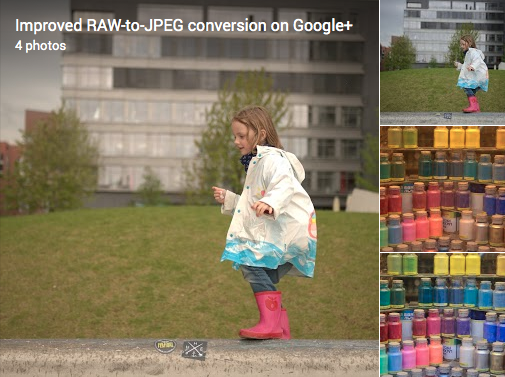Plenty of people seem to be excited, or at least pleased, by Google's announcement that it has improved its Raw-to-JPEG conversion process for image files created by over 70 different cameras. I, however, cannot help but feel that Google, and the Nik Photography team that worked on the project, have overelooked one of the key factors that motivates photographers to shoot in Raw: we like the flexibility that it provides us.

The Raw-to-JPEG conversion process doesn't allow photographers to make edits to the Raw file, where the majority of the data are stored and where the photographer can have the most significant impact on the final version of her or his photos. Instead, it converts the Raw file to JPEG and expects the photographer to make edits to an already adjusted image. An image that has been adjusted according to what the conversion programme deems best, not the photographer.
It's a process that rather defeats the purpose of shooting in Raw.
I might as well shoot in JPEG format and allow the camera to make the development choices if I'm going to shoot in Raw and then let a series of Google-written algorithms develop my photos for me. It'd save oodles of storage space.
If Google is anticipating that photographers are using Google+ as a back-up of Raw files and just want a glimpse of them in JPEG for identification purposes, that's all well and good, although it does strike me as a ridiculous waste of development time to produce something they believe so sophisticated for what's a relatively trivial demand. Should the aim be for Google+ to rise as a serious contender for serious image storage and processing, it needs to rearrange its cart-and-horse configuration.
For completeness, the cameras whose files are supported by the new conversion process are:
Canon EOS: 100D, 1000D, 1100D, 1D Mark III, 1D Mark IV, 1Ds Mark III, 1Dx, 20D, 30D, 350D, 400D, 40D, 450D, 500D, 50D, 550D, 5D, 5D Mark II, 5D Mark III, 600D, 60D, 650D, 6D, 700D, 7D, M Canon Powershot: G12, G1X, S100 Nikon: 1 J1, 1 J2, 1 J3, 1 S1, 1 V1, 1 V2, Coolpix A, D300, D300s, D3000, D3100, D3200, D4, D40, D40X, D5000, D5100, D5200, D600, D700, D7000, D7100, D800, D800E, D90 Olympus: OM-D E-M5, PEN EP1, PEN EP2, PEN EP3, PEN EPL3, PEN EPL5 Panasonic: LUMIX DMC GF1 Sony: Alpha 700, NEX-5, NEX-5N, NEX-6, NEX-7, NEX-C3, NEX-F3, RX1, RX100, SLT Alpha 55, SLT Alpha 77, SLT Alpha 99
(Headsup to ePhotozine; full details on Google+.)





